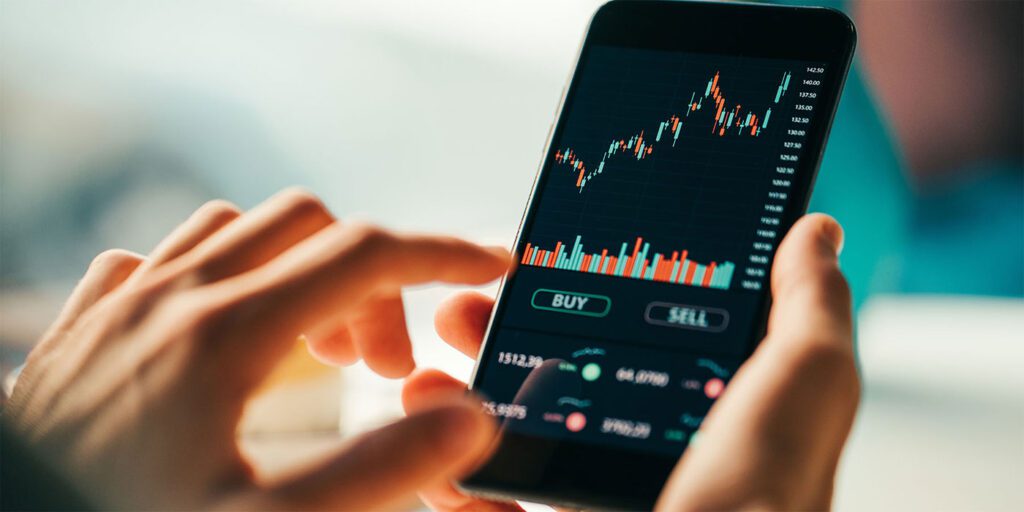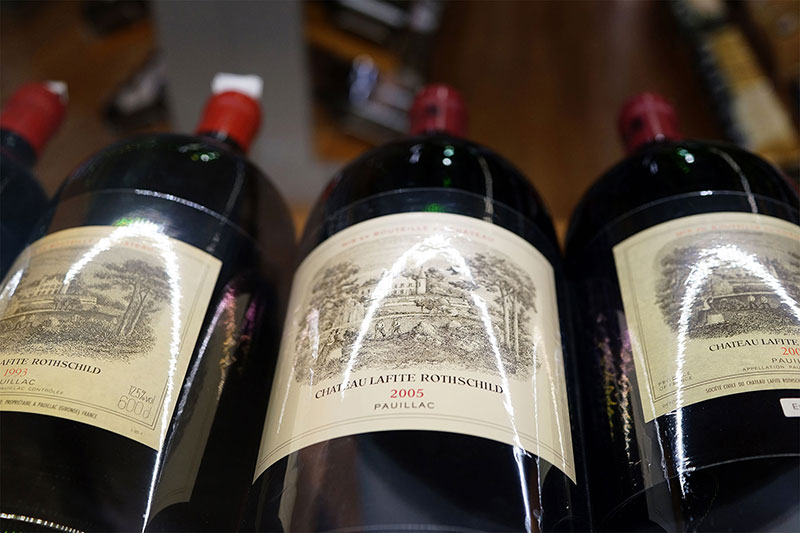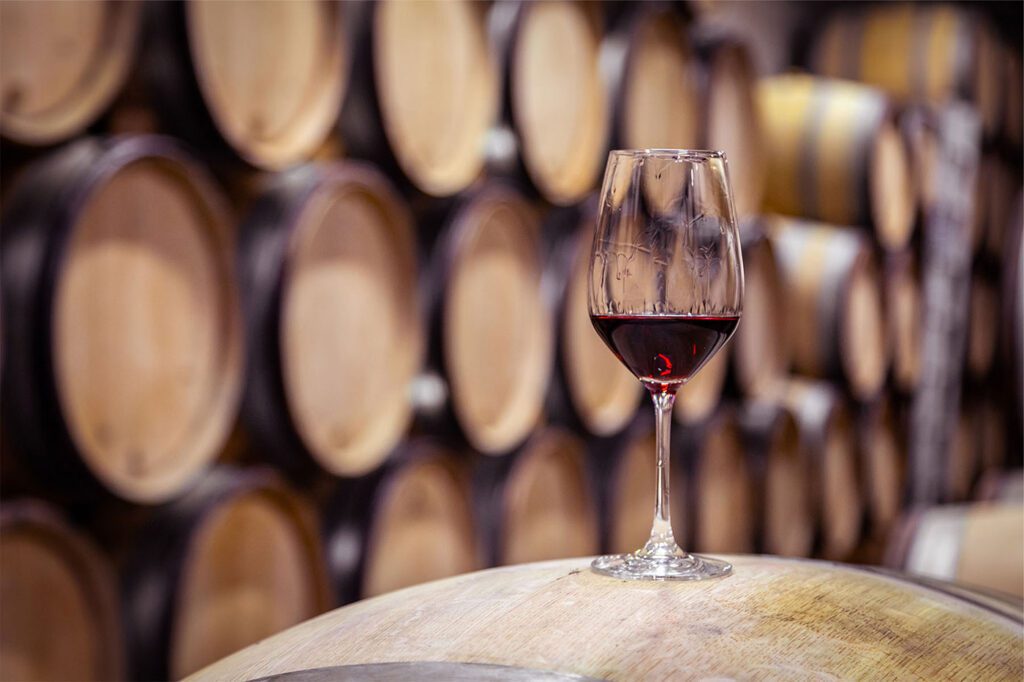
Overall, wine investors have seen some solid results over the years. Per the world’s largest online wine stock exchange, Liv-Ex, it has delivered 13.6% annualized returns over the past 15 years. That’s better than many publicly traded equities and ETFs!
Wine can be a relatively stable investment. As a luxury item, its customers are typically less affected by changes in the economy. In fact, the market boomed during the recent Covid Pandemic. And as each bottle is uncorked there’s less of it, which means demand and price are bound to go up over time.
Sounds promising, but as with all investments, there are some risks to consider!
Wine investment risks
- Investment-grade wine is different from the stuff you find at your local store. It’s important to really know and understand the market. A trusted advisor is always helpful.
- A wine’s value doesn’t increase forever. It’s generally thought of as a “wasting asset” because it declines in quality and value after a certain point.
- Wine can go bad if not properly maintained. You should know the provenance (history) of a wine before you buy it, and you’ll need to store it in optimum conditions, too.
- Wines cellared remotely need to be insured and bonded (to avoid losses due to damage and to cover excise taxes).
- Fraud is common, especially when trading in countries where counterfeiting is rampant.
- There is a 28% Federal “Collectibles” gains tax for selling luxury wines in the US.
Which wines are the best for investment?

As you might expect, the most famous and celebrated wines in the world come from Europe. They’ve been making it there for thousands of years and have perfected the art. Because these wines age well, receive consistent high marks from critics, and command top dollar among buyers, their reputation precedes them.
Here are some of the most heavily traded on the market:
- First-growth Bordeaux like Chateaus Lafite, Rothschild, and Pavie
- Grand Cru Burgundies like Romanée-Conti, Bouchard Meursault, and Cru Chablis
- Vintage Champagne from top houses Moet, Perrier-Jouet, Roederer, etc.
- Rhone Reds from Hermitage, Côte-Rôtie, St.-Joseph, Cornas, and Châteauneuf-du-Pape
- Italian Barolos from producers like Giacamo Conterno and Gaja
- Italian Brunellos from Biondi-Santi and Masi
- Super-Tuscan reds like Sassicaia, Tignanello, and Ornellaia
- Spanish Rioja from López de Heredia Viña Tondonia and Bodegas Muga
- California cult wines like Opus One, Screaming Eagle, and Insignia
How do I begin investing in wine?
- Figure out how much you want to invest and what your timeline is. For worthwhile gains, you’ll need to invest a fair amount of money. Some professionals advise starting with a minimum of $10,000. You should expect a return on investment between 5 and 10 years.
- Do your research. Use online resources like Vinous, Cellar Tracker, and Robert Parker to track trends and prices. You can also find fellow collectors on social media using the hashtag #wineinvestment to see what they’re buying and drinking.
- Where will you buy your wine from? An auction house, private seller, broker, or bottle shop, each has its costs and benefits. Auction houses can offer guarantees but charge high “hammer” fees. Private sellers may be willing to negotiate but there’s more risk. Exchanges like Liv-Ex have international taxes and shipping fees. You can also buy direct from wineries as an option.
- Will you store your investments in your own cellar? If so, your storage space needs to be top-notch. If it’s not ready for Prime-Time, we can help.
- Decide how you’ll sell when it’s time. Many of the same resources listed above can be used for reselling, too – with similar prices and fees to consider.
Other Wine Investment Options
Buying wine futures: higher risk, but more potential for gain.
If you’re feeling a little more speculative, the Bordeaux region of France offers one more investment option – En Primeur – that is, buying wine before it’s bottled. Every year, Bordeaux winemakers pre-sell “Futures” of the new vintage with hopes that it will increase in value by the time it’s ready for market. But because the value is speculative, Futures are volatile and can head south quickly with the wrong turn of events. The upside is that if the wine does well at market release, you can make some impressive gains.

Online wine investment services are great for beginners.
If you’re just not that confident in your investing abilities, online services like VinoVest and Cult Wines can do all of the heavy lifting for you. Using proprietary AI that monitors the market, they make recommendations, vet the provenance of the wine, facilitate the buying, storage, and selling; they even insure and bond it for you too. For all of this, they’ll take a modest commission (around 3%), which is still lower than most private brokers and auction houses.
Blue chip stocks are a low-risk way to invest in wine.
Not quite ready for a commitment this big? There are still some low-risk ways to invest in wine. Blue-Chip stocks like Constellation Brands (Ticker: STZ) and Diageo (DEO) are solid performers on the New York Stock Exchange.
What are some examples of returns on wine investments?
- In 2015, a case of 2010 Domaine de la Romanée-Conti Echezeaux cost $8362. It now sells for $23,000.
- Louis Roederer’s 2008 Cristal Rosé saw a 35% increase in the first half of 2021 ($7600/case)
- In 2012, Screaming Eagle Sauvignon blanc was released for $250/bottle. It now sells for $4200.
On the flip side,
- 17 years later, the 2004 Chateau Sarget de Gruaud Larose, a highly lauded Bordeaux, still sells for about $35 per bottle after being called “a disappointment,” by critic Robert Parker.
- 13 years later, 2008 Domaine Ferraton Hermitage Rouge sells for just $70 a bottle after being rated 89/100 in Wine Spectator Magazine.
And therefore, it pays to choose wisely…
The good news: demand for fine wine is on the rise!
According to this recent report, the global wine market is set to grow annually by 4.28% over the next five years. With setbacks from the Covid pandemic taken into consideration, this could be even higher once the economy is running full steam.
With wine production at a relatively fixed rate, especially in the world’s best regions, luxury wine is expected to become more scarce – hence driving demand and price further up.
If you already collect for profit or have been thinking about starting, there might not be a better time than now, to invest in wine.

